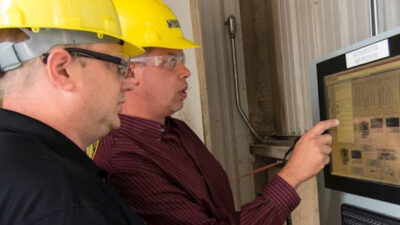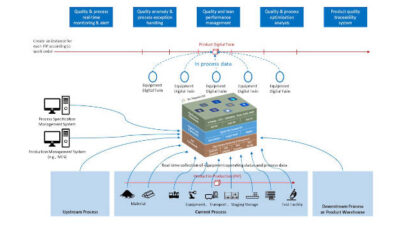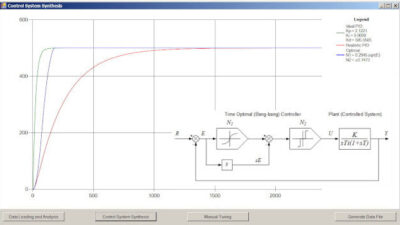Simulation training provides many benefits for manufacturers such as better production throughput, flexibility and cost efficiency.
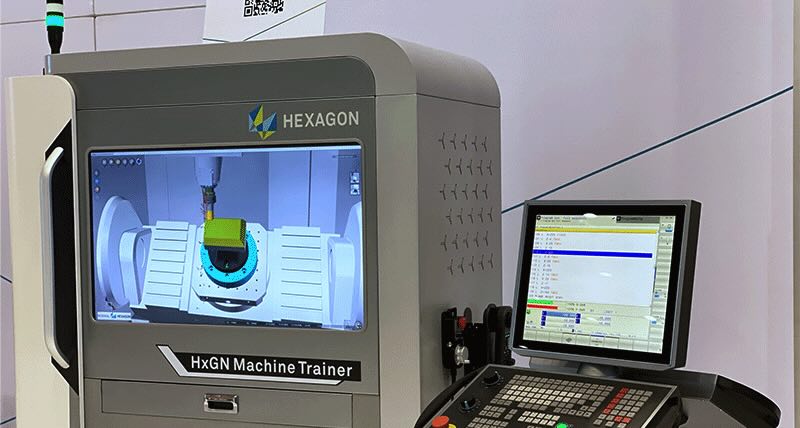
Simulation insights
- Simulation training boosts manufacturing efficiency by reducing downtime and equipment wear during training, ensuring uninterrupted production schedules and improved overall productivity.
- By integrating AI and AR/VR technologies, simulation training offers immersive, personalized learning experiences, enhancing the adaptability and skill levels of the manufacturing workforce.
To stay ahead as global competition increases — and technology continues to evolve — manufacturers must continually innovate. One innovation area that has recently realized significant growth is the adoption of simulation and virtual training technologies. These cutting-edge tools are transforming how manufacturers train their workforce, allowing them to develop the skills and knowledge needed to thrive in the modern manufacturing landscape.
Simulation training offers a safe, cost-effective and efficient way to train employees on complex machinery and processes. By leveraging digital twins and virtual environments, manufacturers can give employees hands-on experience without the risks and constraints associated with traditional training methods.
The growing need for simulation training in modern manufacturing is shaping a more skilled and adaptable workforce. This article will explore its benefits and how it integrates with emerging technologies.
The need for simulation training in modern manufacturing
It’s no secret traditional manufacturing training methods often involve investing significant time, money and resources. Granting trainees access to expensive machinery for training purposes comes with the downsides of potential safety hazards and accelerated equipment wear and tear.
However, the impact of traditional training extends beyond just the equipment itself. Manufacturers using machines for training means those machines aren’t currently producing parts. Every minute spent training translates directly to a minute less for production. As a result, traditional training methods can impact production schedules and overall organizational efficiency.
The labor shortage among skilled machinists and other manufacturing professionals exacerbates this problem. Older operators are retiring and new generations need upskilling, creating an urgent gap in talent. But as companies compete to fill these roles, they’re quickly discovering the limitations of traditional training methods. As a result, organizations are struggling to balance their training needs and production demands. This leads to bottlenecks and inefficiencies that can hamper growth and competitiveness.

Simulation training also helps bridge the shop-floor skills gap and supports upskilling by providing a virtual environment where trainees can develop skills without physical machinery. This approach not only reduces the risk of damaging expensive equipment but also allows manufacturers to create more flexible, efficient training schedules. Trainees can repeatedly practice complex tasks and scenarios — and learn from their mistakes — without the fear of real-world consequences.
Seven benefits of simulation training technologies
Simulation training technology offers manufacturers many benefits, including:
-
Greater production throughput. If manufacturers can train employees on new machinery or processes more quickly, they can minimize downtime and maintain a more consistent production schedule.
-
Simulation training enhances worker safety. Virtual environments allow trainees to practice in a safe space. This lets them become familiar with potential hazards and learn how to respond to them. Trainees can encounter simulated hazards and learn proper responses without putting themselves or others at risk. That’s especially important in industries where the consequences of errors can be severe, like aerospace or automotive manufacturing.
-
Simulation training provides more flexibility. Besides improving safety, simulation training is an essential tool for upskilling and reskilling employees. According to a recent study by Deloitte and the Manufacturing Institute, the U.S. manufacturing sector faces a potential shortage of 2.4 million workers by 2028, underscoring the urgent need for more practical, scalable training solutions. As new technologies emerge, manufacturers must ensure that their workforce can similarly adapt. Simulation training gives manufacturers a flexible way to continuously educate employees, ensuring they stay current with the latest industry developments.
-
Larger hiring pool. Simulation training can also help companies expand their hiring pool. No longer does an organization have to select from only candidates with specific machinery experience and knowledge. With simulation training, companies can hire candidates based on their aptitude and provide hands-on training that meets their specific setup and needs.
-
Improved cost efficiency. Simulation training reduces the need for physical machinery during training, meaning manufacturers can minimize wear and tear on expensive equipment. This not only extends the machinery’s life but also reduces maintenance and repair costs. Simulation technology’s faster training cycles lead to lower overall training costs and a quicker return on investment.
-
Simulation training provides better scalability. With simulation training, manufacturers can easily update and scale their training programs as they expand their operations or introduce new technologies. Simulation training can also be delivered remotely (and consistently) across multiple locations, making it particularly valuable for large organizations with distributed workforces. New technologies can use AI to simulate multiple types of computer numerical control (CNC) and coordinate measuring machines (CMMs), which lets companies train several machine interfaces on a single virtual trainer.
-
Real-world impact of simulation training. Simulation training can help workers develop high-level skills for complex manufacturing tasks. By providing trainees with a realistic virtual environment, they can practice and perfect their techniques without the pressures and limitations of real-world production. This focused skill development leads to improved precision and accuracy — factors that are critical to meeting modern manufacturing’s strict quality standards.
Simulation training’s impact on productivity is well-documented. Implementing these technologies has led to a surge in production efficiency, faster employee onboarding and reduced training times.
In addition to improving productivity, simulation training helps maintain high quality and compliance with industry standards. By allowing workers to practice procedures in a controlled environment, they can better understand the processes and potential issues that may arise. This knowledge translates into fewer errors and higher-quality output in real-world production scenarios.
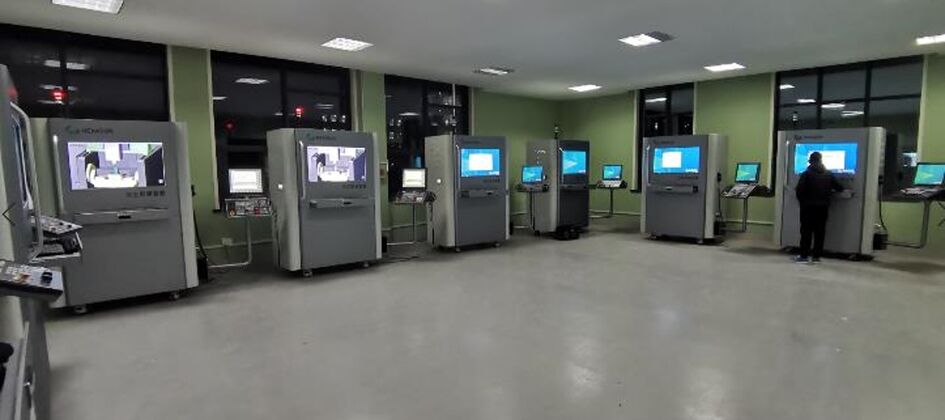
Integrating emerging technologies into simulation training
As simulation training evolves, it’s increasingly integrated with other technologies to create more powerful learning experiences. Using artificial intelligence (AI) and predictive analytics in simulation training is just getting started. These tools pave the way for a future in manufacturing where personalized learning modules cater to individual strengths, weaknesses and learning styles.
Another exciting development on the simulation training horizon is the integration of mixed reality technologies, such as augmented and virtual reality (AR/VR). These immersive technologies will allow trainees to interact with virtual environments in a more natural, intuitive way, enhancing the realism and effectiveness of the training experience.
Simulation is the future of manufacturing training
As the manufacturing industry continues evolving, simulation training will play a larger role in creating the skilled workforce needed to meet future challenges. By providing a safe, efficient and cost-effective way to train employees, simulation technologies are helping manufacturers drive innovation, stay competitive and foster a more skilled, adaptable and resilient workforce.
To fully capitalize on simulation training benefits, manufacturers must take proactive steps to integrate these technologies into their organizations. This means investing in the right tools and platforms and developing comprehensive training programs that leverage the power of simulation. Doing so allows manufacturers to create an engaging, effective learning environment that aligns with their workforce’s needs.
Manufacturers should view simulation training as a strategic initiative that can help them stay ahead of the curve. By embracing this approach to manufacturing education, organizations can improve the skills and knowledge of their existing workforce, attract new talent and position themselves as industry leaders.
Christopher Parker, engineering supervisor at Hexagon Manufacturing Intelligence. Edited by Chris Vavra, senior editor, Control Engineering, WTWH Media, [email protected].
MORE ANSWERS
Keywords: Simulation training, simulators
CONSIDER THIS
How can simulation training help improve your facility?
